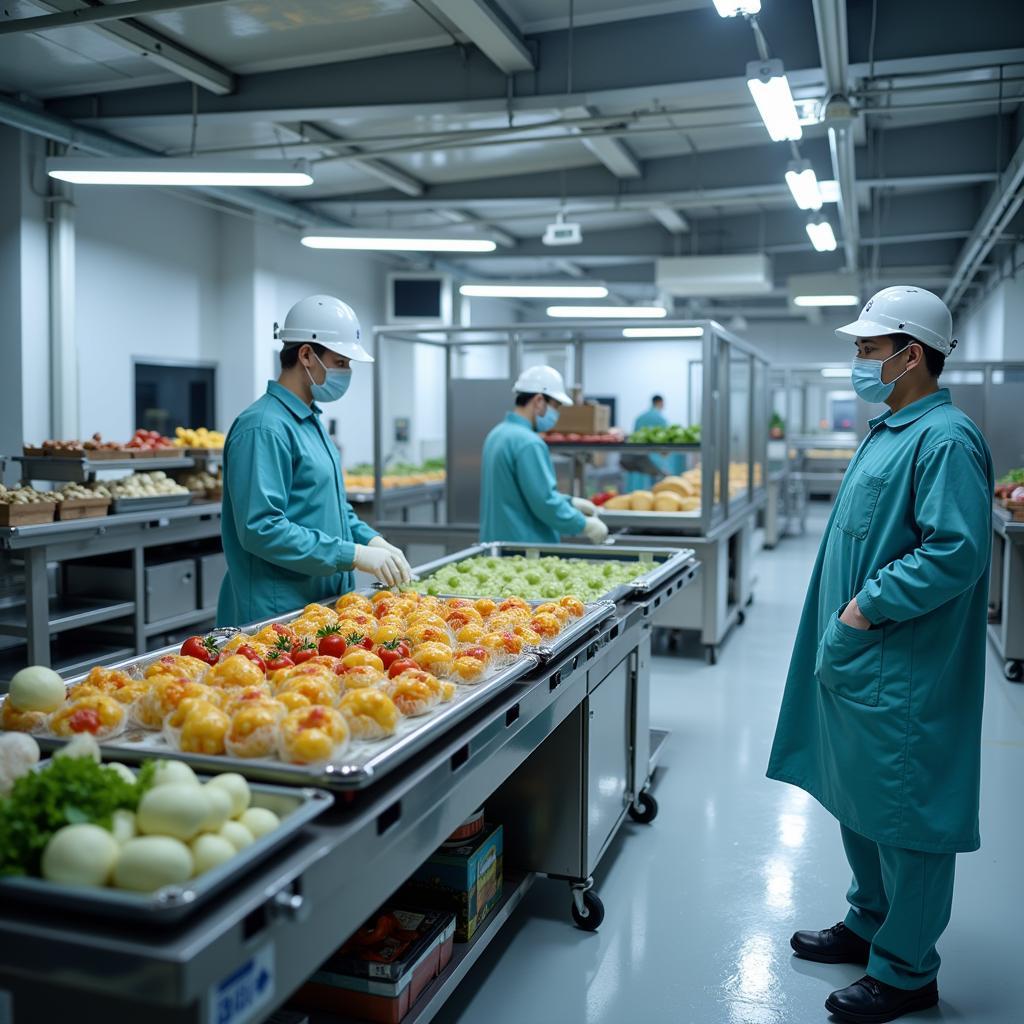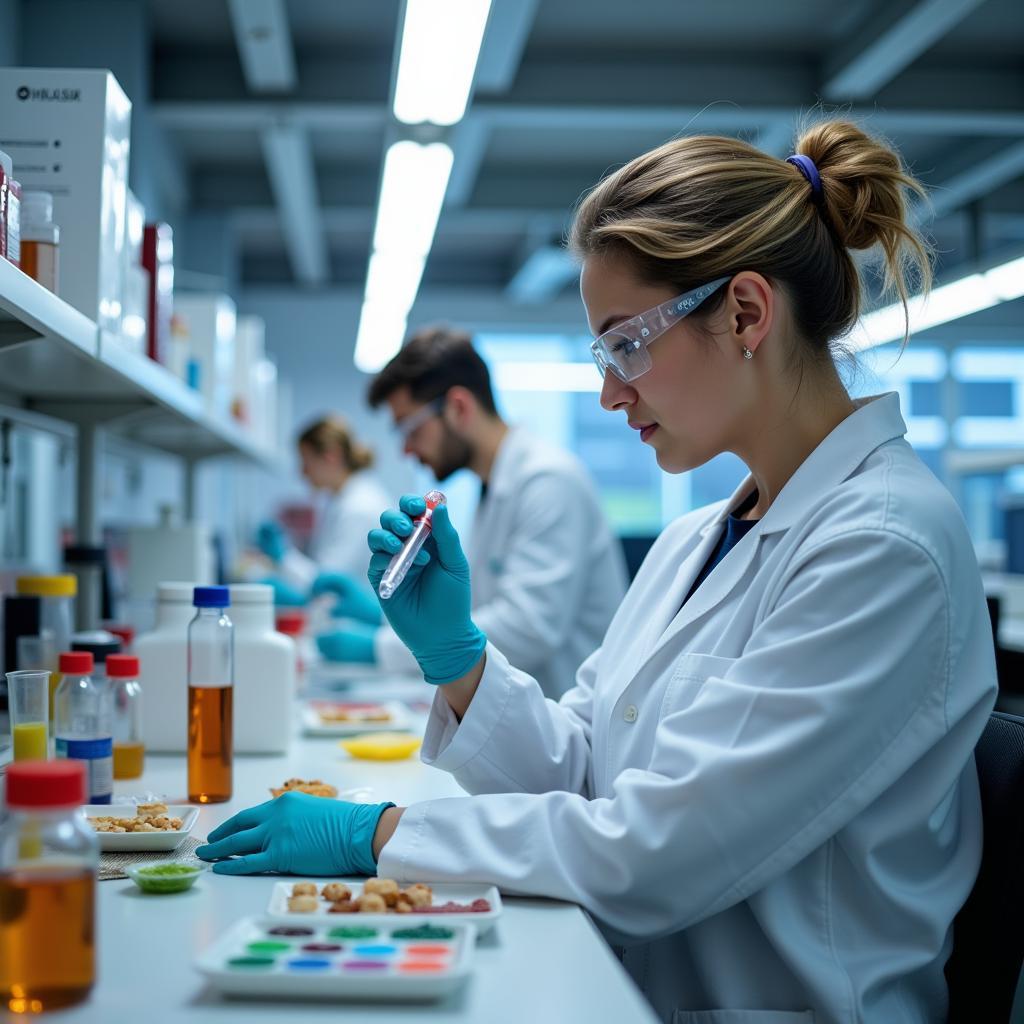Food Technology Safety is paramount in today’s world. With advancements in food processing and production, ensuring the safety and quality of our food supply is more critical than ever. This article explores the intricate relationship between food technology and safety, examining the latest innovations and best practices aimed at protecting consumers from foodborne illnesses and ensuring access to nutritious and safe food.  Modern Food Production and Technology for Enhanced Safety
Modern Food Production and Technology for Enhanced Safety
Understanding the Importance of Food Technology Safety
Food technology encompasses a broad range of techniques and processes used to transform raw ingredients into consumable products. From preservation and packaging to genetic modification and novel processing methods, these advancements have revolutionized the food industry. However, each technological intervention brings potential safety concerns that must be carefully addressed. Consumers rely on stringent safety protocols to minimize risks associated with foodborne pathogens, chemical contaminants, and allergens. food safety and technology plays a crucial role in maintaining consumer confidence and protecting public health.
How Technology Enhances Food Safety
Technological advancements offer a multitude of tools and techniques for enhancing food safety. For instance, high-pressure processing (HPP) eliminates harmful bacteria without the use of heat, preserving the nutritional value and sensory qualities of food. Similarly, modified atmosphere packaging (MAP) extends shelf life and reduces spoilage by controlling the gaseous environment within food packaging. These technologies, when implemented correctly, significantly reduce the risk of foodborne illnesses and contribute to a safer food supply chain.
What are the core benefits of incorporating technology in food safety? Technology provides tools for rapid detection of pathogens, automates sanitation processes, and enhances traceability throughout the supply chain.
Key Challenges in Food Technology Safety
While technology plays a vital role in enhancing food safety, it also presents unique challenges. The rapid pace of innovation often outpaces the development of appropriate safety regulations and testing methods. Ensuring that new technologies are thoroughly evaluated and regulated is essential to prevent unintended consequences.  Challenges in Food Safety with Technological Advancements Furthermore, the increasing complexity of global food supply chains makes tracing the source of contamination more difficult.
Challenges in Food Safety with Technological Advancements Furthermore, the increasing complexity of global food supply chains makes tracing the source of contamination more difficult.
Addressing Emerging Concerns in Food Safety
Emerging concerns in food technology safety include the potential risks associated with nanotechnology, genetic modification, and the use of novel food ingredients. Thorough research and robust regulatory frameworks are crucial to address these concerns and ensure the long-term safety of our food supply. food tray for wheelchair may benefit from these new technologies to ensure their food safety as well.
Why is it important to address emerging concerns proactively? Proactive measures help to prevent widespread health issues and build trust in the safety and integrity of the food supply.
Best Practices for Ensuring Food Technology Safety
Implementing robust food safety management systems is crucial for mitigating risks and ensuring consumer protection. Hazard Analysis and Critical Control Points (HACCP) is a widely recognized and effective approach to identifying and controlling potential hazards throughout the food production process. Regular audits, inspections, and training programs are essential components of a comprehensive food safety strategy.
The Role of Consumers in Food Safety
Consumers also play a vital role in maintaining food safety. Proper food handling practices at home, such as washing hands, cooking food to the correct temperature, and storing food appropriately, are essential for preventing foodborne illnesses. food safe hose pipe can ensure water used in food processing is clean. Educating consumers about food safety guidelines and empowering them to make informed choices contributes to a safer food environment for everyone.
How can consumers contribute to food safety? By following proper food handling practices, staying informed about food recalls, and reporting any food safety concerns to the appropriate authorities.
“Food safety is a shared responsibility. Everyone involved in the food supply chain, from farm to fork, has a crucial role to play in ensuring the safety and quality of our food,” states Dr. Emily Carter, a leading food safety expert.
“Technological advancements offer powerful tools for enhancing food safety, but they must be implemented responsibly and with careful consideration for potential risks,” adds Dr. Michael Johnson, a renowned food technologist. biotech food supplements are a good example of how technology can enhance food safety in this area.
Conclusion
Food technology safety is a dynamic and evolving field. As technology continues to advance, ensuring the safety of our food supply requires ongoing vigilance, innovation, and collaboration between scientists, regulators, industry stakeholders, and consumers. 12 tcs foods are especially important to consider in this context. By embracing best practices and fostering a culture of food safety, we can harness the benefits of technology while minimizing risks and safeguarding public health.
FAQ
- What is food technology safety?
- Why is food technology safety important?
- What are some common food safety hazards?
- How can technology help improve food safety?
- What is HACCP?
- What are the responsibilities of food manufacturers regarding food safety?
- What can consumers do to ensure food safety at home?
Need support? Contact us 24/7: Phone: 02437655121, Email: minacones@gmail.com or visit us at 3PGH+8R9, ĐT70A, thôn Trung, Bắc Từ Liêm, Hà Nội, Việt Nam.